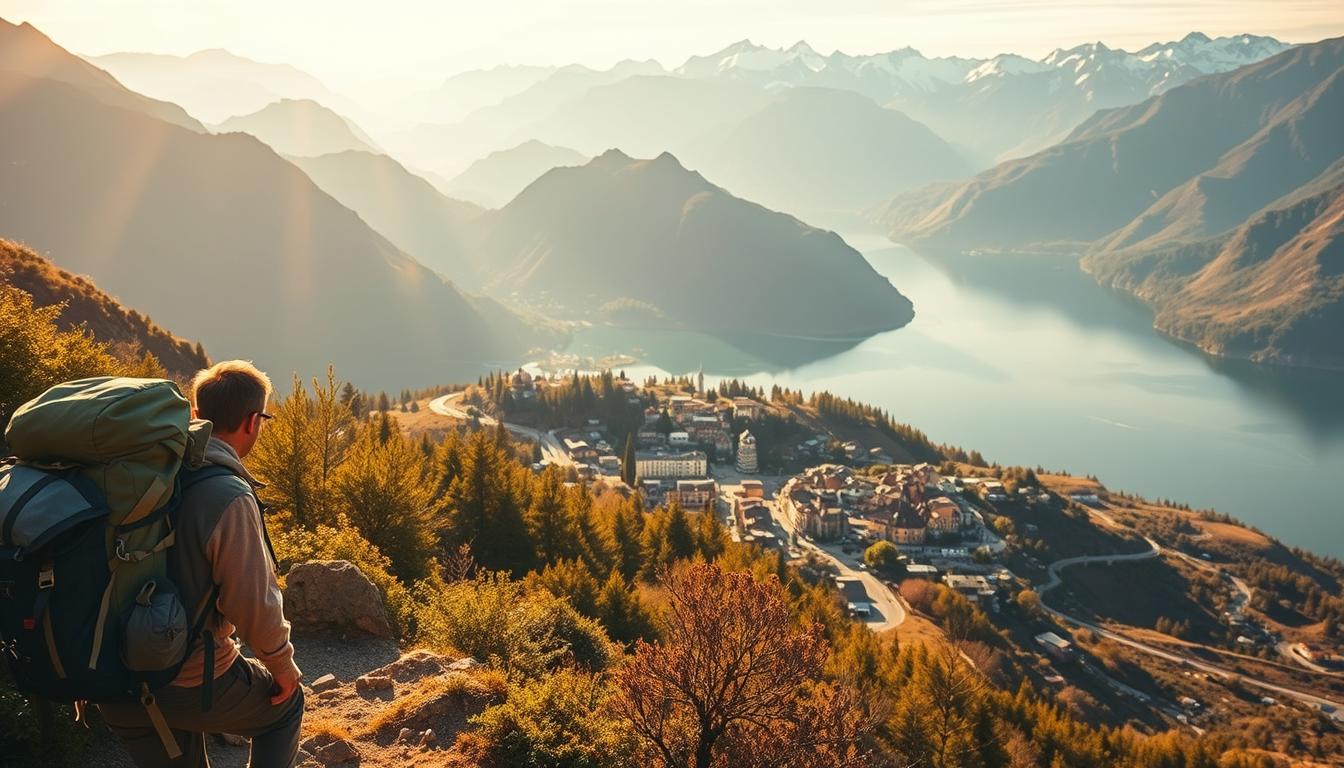Cheap Destinations for Backpackers: Explore the World on a Budget
What if you could explore ancient temples, hike volcanic trails, and enjoy street food feasts for less than the price of a movie ticket? Savvy travelers routinely stretch $10-15 daily budgets across continents by targeting locations where their money unlocks authentic experiences. This isn’t about skipping meals or sleeping on park benches—it’s about smart choices that turn limited funds into lifelong memories.
Budget travel thrives on strategic destination selection. While India remains a classic low-cost option, lesser-known spots like Albania’s beaches or Guatemala’s highlands deliver equal adventure at similar prices. The secret lies in balancing affordability with cultural richness—think $3 homestays near UNESCO sites or $1 bus rides through mountain landscapes.
This guide reveals how to maximize every dollar without sacrificing discovery. We’ve curated locations offering exceptional value: places where hostel dorms include breakfast, public transit costs pennies, and entrance fees to natural wonders stay under $5. You’ll learn how seasoned explorers fund month-long trips for what some spend on a weekend getaway.
Key Takeaways
- Daily budgets under $15 work in dozens of countries with proper planning
- Value-focused locations beat “cheapest” spots for balanced experiences
- Hidden gems often provide better affordability than tourist hotspots
- Local transportation and street food dramatically reduce costs
- Adventure remains accessible regardless of budget size
Welcome to Budget Travel: An Introduction
Imagine swapping hotel concierges for homestay hosts and museum audio guides for conversations with street vendors. This is modern budget travel—transforming how we engage with the world while stretching every dollar. Over the past decade, explorers have proven that limited funds unlock richer cultural exchanges than luxury ever could.
The secret lies in a simple mindset shift: value over convenience. Seasoned travelers prioritize slow exploration, using local buses instead of tours and family-run eateries over international chains. These choices don’t just save money—they create stories you’ll retell for years.
Today’s budget journeys blend practicality with discovery. Affordable stays now include eco-lodges in Guatemala and artist-run hostels in Georgia. Meals become adventures when you master phrases like “market price” in Vietnamese or haggle for fresh mangoes in Moroccan souks.
This approach demands flexibility but rewards with authenticity. As one backpacker notes: “My $12-a-day travels through Nepal taught me more about resilience and joy than any five-star resort ever did.” Your money becomes a bridge to communities rather than a barrier to entry.
Our guide focuses on destinations where safety and cultural depth meet affordability. We’ve filtered out overcrowded spots to highlight places where your presence supports local economies—and your memories outlast your tan lines.
What Defines a Cheap Destination for Backpackers?
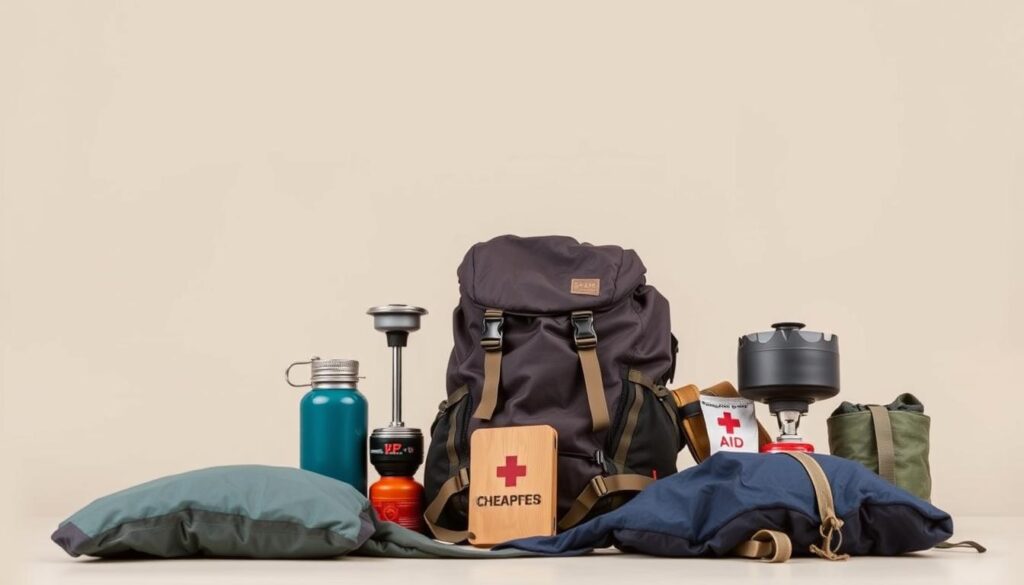
True budget-friendly spots transform every dollar into meaningful experiences. Four pillars define these value-packed locations: sleep, eat, move, explore. Affordable lodging anchors the equation—think $3 homestays in Laos or Guatemala’s $5 hostel dorms with volcano views.
Street food culture slashes meal costs while deepening cultural connections. In Thailand, $1.50 buys pad thai from sidewalk woks. Local markets like Bolivia’s mercados serve hearty soups for less than a coffee back home.
Efficient transport networks keep countries accessible. Vietnam’s sleeper buses cost $20 for 12-hour journeys—less than airport transfers elsewhere. “In Albania, dollar-fare minibuses reached trailheads no tour vans could,” notes travel blogger Marco Reyes.
Free adventures separate genuine deals from tourist traps. Nicaragua’s crater lakes and Georgia’s mountain trails require no entry fees. As one hiker puts it: “Why pay $40 for a museum when Guatemala’s active volcanoes cost $3 to climb?”
Benchmarks matter. A country delivers true value when $10-15 daily covers:
- Comfortable shared lodging
- Three filling local meals
- Multiple transit connections
- Unforgettable activities
These destinations prove adventure thrives where communities welcome travelers, not corporate tourism. Your money becomes seeds for memories, not just survival.
Budget Travel Trends: Getting the Most Out of Every Dollar

Modern explorers are rewriting the rules of budget travel by blending tech tools with cultural immersion. Platforms like TrustedHousesitters and Worldpackers now offer free stays in exchange for pet care or gardening, while apps such as Too Good To Go sell unsold meals from local bakeries at 70% off. Seasonal strategies amplify savings—travelers flock to Albania’s beaches in May when hostel prices drop 40% compared to July.
Currency exchange rates create unexpected opportunities. Argentina’s blue dollar market lets visitors effectively double their spending power overnight. “My $15-a-day Buenos Aires trip felt like luxury dining,” says digital nomad Lena Choi. Similarly, Nepal’s stable rupee makes $3 dal bhat feasts and $5 guesthouses accessible year-round.
Social media communities shape modern routes. Facebook groups like “Budget Travel Hacks” share real-time tips on border crossings and local deals. Reddit threads reveal hidden gems like Georgia’s $10/day mountain guesthouses with homemade wine included. These networks turn solo trips into collaborative adventures.
| Destination | Best Time | Budget Hack | Daily Savings |
|---|---|---|---|
| Albania | May-June | Community homestays | $12 vs $20 peak |
| Argentina | Currency dips | Blue dollar exchanges | 50% more value |
| Nepal | Oct-Nov | Local bus networks | $3 vs $15 tours |
Emerging trends focus on value-packed flexibility. Apps like Hopper predict airfare drops, while Sleeper trains in Vietnam offer $20 overnight journeys with free bedding. The future? Expect AI tools that negotiate hostel prices and carbon-offset options baked into budget bookings.
Cheap Destinations for Backpackers: Top Budget Spots Revealed

Discover regions where every dollar unlocks vibrant cultures and breathtaking landscapes. From steaming bowls of pho in Hanoi to moonlit hikes up Guatemalan volcanoes, these locations prove unforgettable journeys don’t require deep pockets.
Asia’s Budget Powerhouses
Vietnam and Cambodia lead Asia’s value-packed options. For $25 daily, travelers explore Hanoi’s Old Quarter or Angkor Wat’s temples. Thailand’s islands surprise with $10 beachside bungalows, while Sri Lanka delivers $3 train rides through tea country.
Key Asian highlights:
- Philippines: Island-hopping tours from $30/day
- Cambodia: UNESCO sites with $1 fresh coconut breaks
- Vietnam: Street food feasts under $5
Latin America’s Undervalued Treasures
Nicaragua’s colonial cities and Guatemala’s highlands shine for culture-rich budgets. Bolivia’s salt flats host $25 group tours, while local markets serve $2 llama stews. As traveler Rosa Mendez notes: “My Guatemala stay cost less than my phone bill—volcano hikes included.”
Latin American standouts:
- Nicaragua: Surf lessons + hostel beds = $25/day
- Bolivia: Moon Valley hikes with $3 admission
- Guatemala: Chicken buses to Mayan ruins for $1 rides
Beyond the Guidebook
Seasoned explorers rave about Georgia’s $10 guesthouses with vineyard views and Albania’s Adriatic coast hostels at half Croatia’s prices. These countries offer authentic experiences minus crowds—perfect for crafting stories no guidebook can replicate.
Exploring Hidden Gems in South America
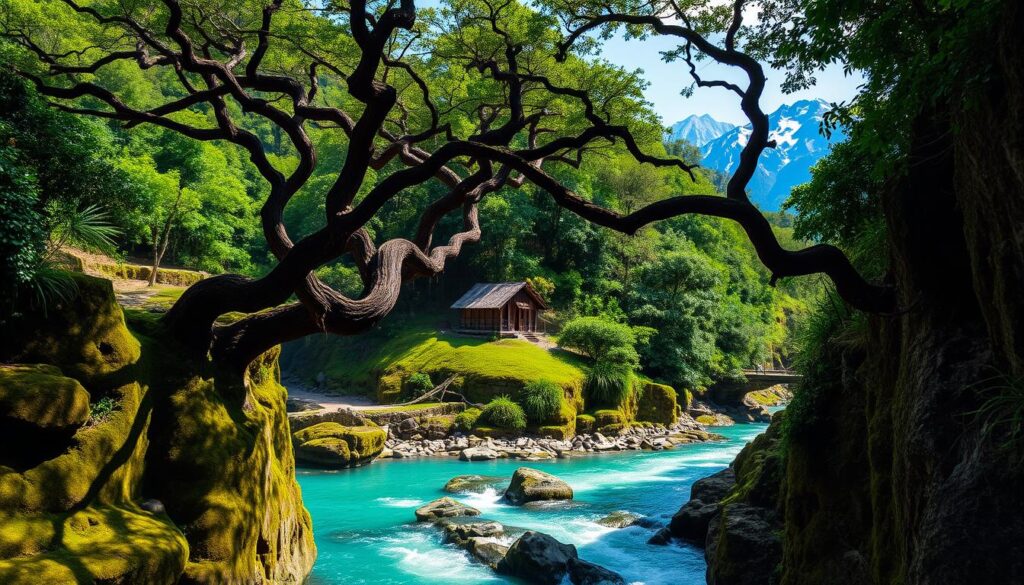
South America hides pockets of wonder where dollars stretch like high-altitude skies. Two nations stand out for blending affordability with jaw-dropping experiences—Bolivia’s ancient traditions meet Nicaragua’s fiery spirit, creating journeys that spark both awe and savings.
Bolivia’s Unique Landscapes
This landlocked country transforms travelers with its surreal salt flats of Salar de Uyuni—a 4,000-square-mile mirror reflecting endless skies. High-altitude treks through Cordillera Real reveal glacial lakes where flamingos nest, while colonial Sucre dazzles with whitewashed architecture. Over 60% of residents maintain indigenous traditions, offering authentic market encounters where $3 buys hearty sajta de pollo stews.
Free walking tours in La Paz showcase woven textiles and pre-Columbian ruins. “My $25 Salar tour included sunset champagne—pure magic,” shares trekker Elena Torres. Bolivia proves that raw natural beauty thrives without luxury price tags.
Nicaragua’s Vibrant Culture
Volcanoes shape life in this Central American country. Board down Cerro Negro’s ash slopes at 60mph, then unwind in Granada’s candy-colored streets. Family-run hospedajes charge $8 nightly, while vigorón (fried yuca salad) fuels adventures for under $1 at Masaya Market.
Leon’s revolutionary murals tell stories better than any museum. Local guide Carlos Mendez explains: “Our $5 volcano hikes fund community schools.” Nicaragua’s fiery landscapes and warm hospitality create memories that outlast your sunscreen.
These places redefine value travel—where every dollar supports local economies while unlocking once-in-a-lifetime moments. From salt-crusted jeep tours to volcano sunrises, South America’s hidden gems prove budget journeys pack the richest stories.
Central American Adventure on a Shoestring
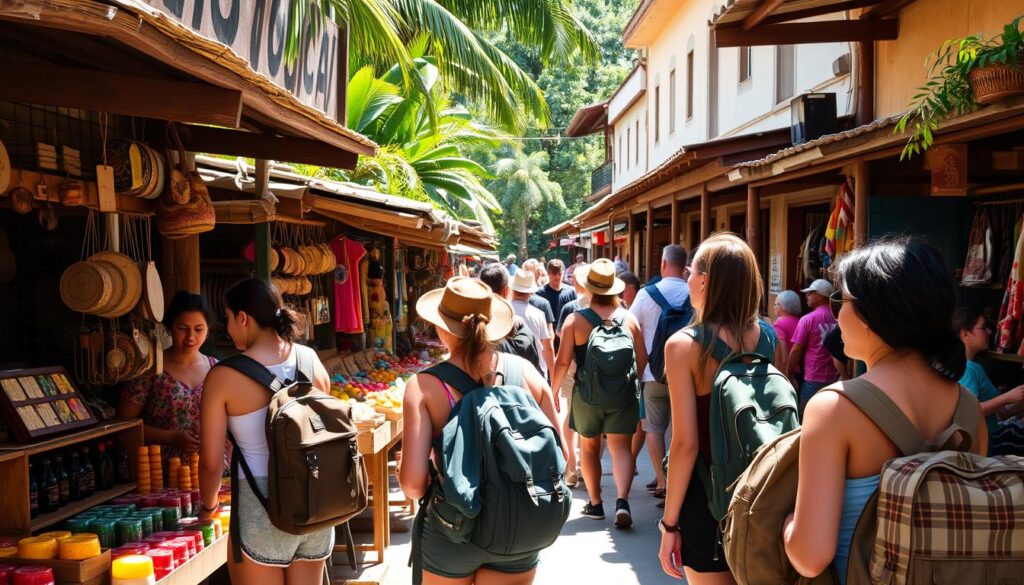
Central America’s seven nations form a kaleidoscope of jungles, beaches, and colonial towns where savvy travelers stretch dollars like warm tortillas. While Costa Rica draws crowds, neighboring countries offer similar thrills at half the price. A $30 daily budget in Guatemala covers volcano hikes and street food feasts, while Nicaragua’s Pacific coast surf camps cost less than a gym membership back home.
Cost Breakdown and Travel Tips
Your money travels farthest when you cross borders strategically. Nicaragua’s hostel beds average $6 versus $15 in Costa Rica. Guatemala strikes a balance with $5 dorm rooms and $1.50 pupusa meals. Local buses—called “chicken buses”—connect countries for under $2/hour, though schedules favor early risers.
| Country | Daily Budget | Transport Hack | Must-Do Activity |
|---|---|---|---|
| Nicaragua | $18-$25 | Shared taxis to Ometepe | Volcano boarding ($30) |
| Guatemala | $25-$35 | Shuttle buses to Antigua | Lake Atitlán kayaking ($8) |
| Costa Rica | $40-$60 | Public buses to Manuel Antonio | National park hikes ($16) |
Seasonal shifts matter. Visit Costa Rica’s Caribbean coast in September when rain showers lower prices, or explore Guatemala’s highlands in April for Semana Santa festivals. As backpacker Lila Chen notes: “I saved $200 by traveling Nicaragua in May—hostels threw in free salsa lessons!”
Three rules for Central American success:
- Eat at comedores (family kitchens) for $3 plates
- Book multi-day tours locally, not online
- Carry small bills—buses rarely take cards
With flexibility, you’ll discover Panama’s $10 island ferries and El Salvador’s free volcanic hot springs. This region rewards those who trade convenience for connection, turning every quetzal and córdoba into stories worth collecting.
Backpacking Through Southeast Asia: Where to Strike Next
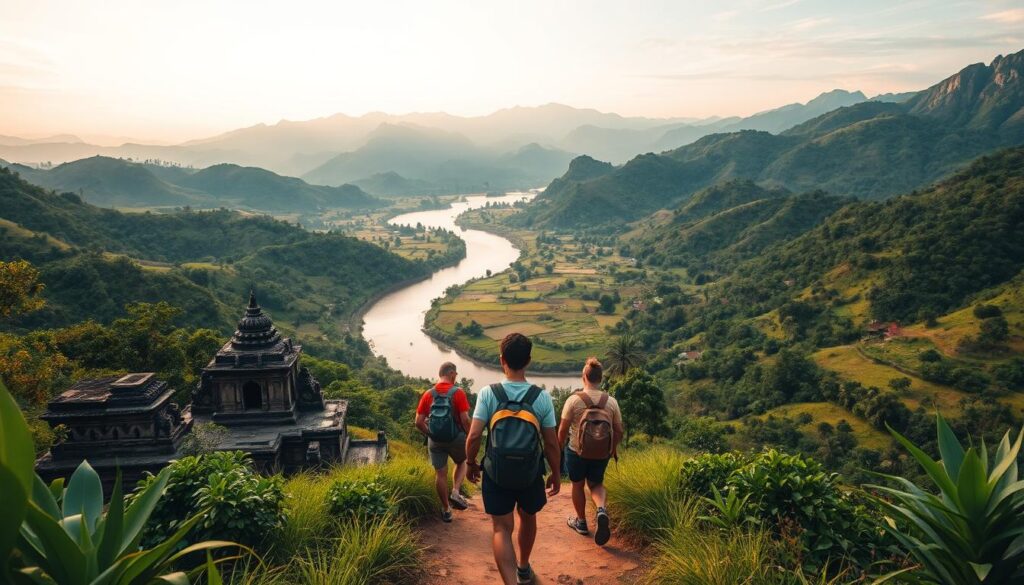
Southeast Asia’s backpacking circuit dazzles with cultural depth and wallet-friendly logistics. Thailand and Cambodia form the region’s backbone, offering distinct flavors of adventure. One country serves fiery curries and limestone cliffs, the other whispers ancient secrets through temple corridors—both keep daily budgets under $30.
Thailand’s Budget Treasures
Move beyond postcard beaches to discover mountain villages where $5 homestays include home-cooked meals. Chiang Mai’s night markets serve grilled squid skewers for 30 cents, while sleeper trains to Pai Valley cost less than a smoothie. Hostel beds in Bangkok’s hidden alleys start at $4, often with free walking tours.
Pro tips for Thai adventures:
- Koh Lanta’s quiet beaches beat crowded islands
- Local buses to Ayutthaya ruins: $1.50 roundtrip
- Muay Thai classes from $8/hour
Cambodia’s Timeless Ruins
Angkor Wat’s sunrise views justify the $62 three-day pass—split it with friends to photograph temples at golden hour. Phnom Penh’s $3 hostel beds come with rooftop pools, while Siem Reap’s night market offers 25-cent draft beers. “My $12/day Cambodia trip funded a village water project,” shares traveler Jake Rivera.
Essential Cambodian experiences:
- Bamboo train rides in Battambang ($5)
- Kampot pepper crab feasts ($4)
- Volunteer opportunities at ethical elephant sanctuaries
Regional buses connect these countries for under $20, letting travelers swap Thai massage schools for Khmer pottery workshops. Street food becomes your compass—follow the scent of lemongrass in Bangkok or fish amok in Phnom Penh. As one backpacker notes: “Southeast Asia taught me that luxury isn’t a price tag—it’s having time to savor every bite and sunset.”
Chasing Affordable Island Vibes in the Philippines and Indonesia
Picture turquoise waters lapping against powdery shores without draining your wallet. Southeast Asia’s archipelagos prove paradise doesn’t require premium pricing. With strategic planning, you can snorkel coral reefs by morning and sip fresh coconuts by sunset—all while keeping daily costs under $35.
Island Hopping in the Philippines
The Philippines’ 7,000+ islands offer endless adventures. El Nido’s limestone cliffs host $15 island-hopping tours, while Siargao’s surf camps rent boards for $5/hour. Dorm rooms in Siquijor’s beachfront hostels start at $7, often including free breakfast. “My $3 ferry ride to Coron revealed hidden lagoons most tourists miss,” shares backpacker Mia Chen.
Local jeepneys and tricycles keep transport costs under $2 for short hops. For longer routes, overnight ferries like Manila to Cebu offer bunk beds for $12—cheaper than flights. Prioritize islands with walkable towns to minimize transit expenses.
Budget Stays in Bali and Beyond
Bali’s $10 hostel dorms near Canggu beaches come with pool access and motorbike rentals. Venture east to Java for $6 homestays near Borobudur Temple. Lombok’s Gili Islands balance affordability with vibrant marine life—$8 snorkeling trips reveal sea turtles just offshore.
Smart strategies help stretch rupiah:
- Book rooms directly through guesthouse WhatsApp numbers
- Eat at warungs (local cafes) for $1.50 nasi goreng
- Use Gojek scooters for 50-cent rides between beaches
While Bali’s cocktails cost up to $10, local Bintang beers stay under $3. As traveler Noah Reyes notes: “Indonesia taught me luxury is watching the sunset from a $12 beachfront bungalow.”
Experiencing the Rich Heritage
Authentic connections with culture thrive where tradition shapes daily life. From Guatemala’s rainbow-hued markets to Nepal’s hilltop temples, heritage lives in shared meals and artisan workshops—not just museum exhibits. These moments cost little but linger longest in memory.
Local guides become gatekeepers to hidden histories. A Mayan weaver might explain natural dyes over tamales, while Balinese farmers demonstrate rice cultivation between hostel shifts. These exchanges turn sightseeing into cultural apprenticeships, often free or donation-based.
Affordable travel shines when supporting living traditions. Attend Albania’s folk festivals for $5 entry fees or learn Thai cooking from street vendors’ daughters. As traveler Sofia Ruiz notes: “My $10 homestay near Cusco included Quechua language lessons—priceless.”
True exploration means leaving resorts to find heritage in action. Whether bargaining for handwoven textiles or dancing at village weddings, these unscripted encounters prove the world’s richest stories aren’t behind velvet ropes—they’re waiting where your presence matters most.
FAQ
What makes a destination budget-friendly for backpackers?
Which countries in South America offer the best value?
How can I save money while exploring Southeast Asia?
Are there affordable island destinations for backpackers?
What’s a daily budget for Central America?
Which regions blend history with low costs?
How do I find hidden gems in popular countries?

Eduard Kingly is a travel and lifestyle content creator with a focus on personal development and education. He combines firsthand travel experiences with research-driven insights to guide readers in discovering new places, building better habits, and pursuing meaningful learning.

